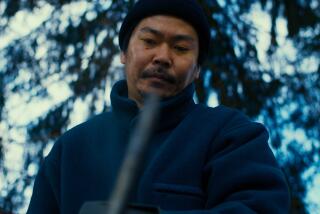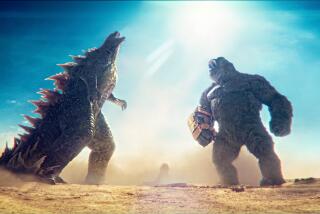CD-ROM REVIEW : The Endless Cosmology of Kyoto
- Share via
It was 1985 when I got off the train in Nara at dusk and began walking down a resi dential street lined with walled-in houses and gardens. It was the second week of my visit to Japan and I had just come from the fabled city of Kyoto, about half an hour away, where I spent the day wandering through temple grounds.
Lost in thoughts about the day, I walked for several blocks in Nara before realizing I had not gone down the street leading to my minsuku , or inn. It was getting dark. From a distance came the echoing sound of wooden clogs on pavement. Otherwise I was alone.
Almost 10 years later, those feelings of being lost, both geographically and culturally, washed back over me as I wandered through the stunning Japanese CD-ROM game Cosmology of Kyoto. This adventure-cultural-historical game takes place in the 10th and 11th centuries, when, according to Japanese mythology, demons and goblins roamed the streets of Kyoto.
Despite recent raves in publications such as Wired magazine, Cosmology of Kyoto has only a devoted cult following in this country. This is at least partly because the English-subtitled version is not easy to find. Available solely in the Macintosh platform (a Windows version is due in a few months), the game is not carried by most of the major software stores or mail-order houses. The best price I found--$79--was through Berkeley-based Stone Bridge Press, a publisher specializing in books about Japan (phone: (800) 947-7271).
But perhaps the biggest obstacle to Cosmology of Kyoto becoming a big hit is its slow pace and meditative nature. Although graphically violent at times, this cerebral game in no way resembles Doom or Rebel Assault.
Once inside Cosmology of Kyoto, you have to throw away your Western ideas about game play.
It begins at the majestic Rajomon gate at the southern entrance to old Kyoto, a planned city with a strictly laid-out grid of streets. Once inside the gate, you are enveloped in the eerie atmosphere of the city. A Taoist priest warns you of dangers; open-air merchants try to sell you everything from rice to miracle cures; a Buddhist monk tells you of a paradise that awaits those who come to the end of the life-rebirth cycle.
Around any corner can be a demon or robber, waiting to send your character off to a hell, where you will have to endure several tortures before being reincarnated.
With so many pathways, buildings and situations to explore, I don’t believe I got close to the end--whatever that is--even after many hours of play. I think that after being reincarnated several times, you reach some kind of exalted state, but I was never quite sure of the goal of the game.
I take comfort in the fact that Peter Goodman, head of Stone Bridge Press, is in the same boat. “I’ve never gotten to the end of it. I don’t know what happens,” he said when I called for advice. “But it sure is beautiful.”
Several CD-ROM games claim to explore the mysterious “dark side” of human nature and activity, but Cosmology of Kyoto--as beautiful as its graphics and soundscape are--stands apart in that it is truly unsettling.
Nothing dramatic happened that night 10 years ago in Nara. Eventually, a man on a bicycle kindly showed me how to get back to my inn. But the memory of that evening--the feelings of isolation and unfamiliarity with such foreign surroundings--is one of the strongest I have of any travels.*
More to Read
The biggest entertainment stories
Get our big stories about Hollywood, film, television, music, arts, culture and more right in your inbox as soon as they publish.
You may occasionally receive promotional content from the Los Angeles Times.











